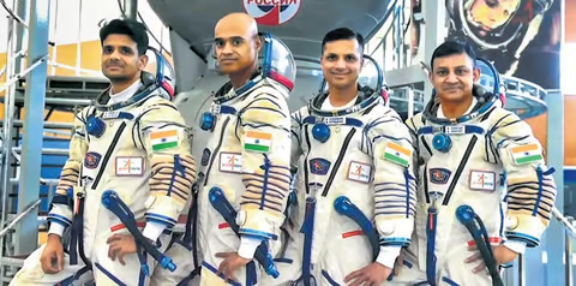
Indian Astronauts Train at NASA Johnson Space Center for Mission to the International Space Station (ISS)
Fiona Nanna, ForeMedia News
4 minutes read. Updated 10:30AM GMT Mon, 8 July, 2024
Indian astronauts are preparing for an extraordinary space mission, having completed their training in Russia and now set to train at NASA’s Johnson Space Center in the United States. This critical training phase is a key step in India’s ambitious space exploration plans, particularly in preparation for the upcoming mission to the International Space Station (ISS).
One of the astronaut-designates confirmed this exciting development to the EurAsian Times, stating that the team would soon depart for the U.S. to familiarize themselves with the American ISS modules at NASA’s Johnson Space Center. This move signifies India’s deepening collaboration with international space agencies.
Historic Mission Details
The mission, scheduled for late 2024 or early 2025, will see one of these astronauts join the Axiom-4 mission to the ISS, marking a significant milestone as the first Indian to visit the ISS and only the second Indian in space since Wing Commander Rakesh Sharma’s 1984 Soviet Interkosmos mission. The mission will involve a two-week stay aboard the ISS, a groundbreaking step for India’s space program.
In early 2024, the Indian government unveiled the identities of the four potential astronauts, or ‘Vyomnauts,’ set for this historic journey. These experienced test pilots from the Indian Air Force (IAF)—Group Captain P. Balakrishnan Nair, Group Captain Angad Prathap, Group Captain Ajit Krishnan, and Wing Commander Shubhanshu Shukla—boast a collective 10,000 flying hours. Their expertise spans various fighter jets, including the Su-30MKI, Mig-21, Jaguars, Mig-29, Dornier, and An-32.
Training and Preparation
The Indian Space Research Organization (ISRO) has yet to announce specific crew assignments, and India’s first human spaceflight is anticipated no earlier than 2025. Meanwhile, NASA is finalizing mission timelines and training modules for the ISS flight. The ISS, a marvel of international cooperation, orbits approximately 250 miles above Earth, having maintained a continuous human presence since 2000.
The selected Indian astronaut will likely join a private mission, differing from the single-day Indian manned mission planned. The Axiom-4 mission, lasting 14 days, will involve training with NASA, international partners, and SpaceX. Axiom Space, having contracted SpaceX, will handle transportation and training for the Dragon spacecraft systems, procedures, and emergency preparedness.
International Collaboration and Future Missions
In 2023, ISRO and NASA agreed to launch a joint mission to the ISS in 2024, serving as a precursor to ISRO’s Gaganyaan mission. This collaboration aims to support future human spaceflight and improve life on Earth. During a recent visit to India, US National Security Adviser Jake Sullivan discussed astronaut training programs with his Indian counterpart, Ajit Doval.
The two nations’ space agencies are also preparing for the NASA-ISRO Synthetic Aperture Radar (NISAR) launch. This satellite, set to map the Earth’s surface bi-weekly, will contribute to global climate change efforts. India has proposed additional projects, such as a G-20 satellite for environmental monitoring and a Gaganyaan cargo module for ISS cargo transfers. Meanwhile, the U.S. has proposed a QUAD satellite, details of which are pending.
The Artemis Accords and Lunar Exploration
In 2023, India signed the Artemis Accords, joining the US-led initiative to return humans to the Moon by 2025 and eventually extend exploration to Mars and beyond. This agreement aims to establish a permanent lunar presence, enhance international cooperation, and pave the way for interplanetary exploration. The Accords will facilitate the sharing of data, technology, and resources, ensuring safe and sustainable lunar exploration.
India’s successful landing of Chandrayaan-3 on the Moon’s south pole—an area believed to hold significant ice deposits—highlights the potential for using lunar resources to support further space exploration. Extracting fuel and oxygen from this ice could be crucial for future missions to Mars and beyond, providing vital resources for the first human colonies.
Backlinks:
- Learn more about NASA’s Johnson Space Center.
- Read about the International Space Station.
- Explore details of ISRO’s Gaganyaan Mission.
- Discover the Artemis Accords and their impact on space exploration.

